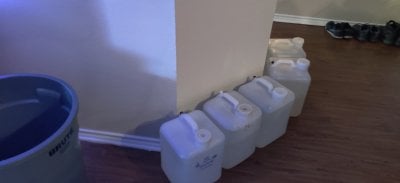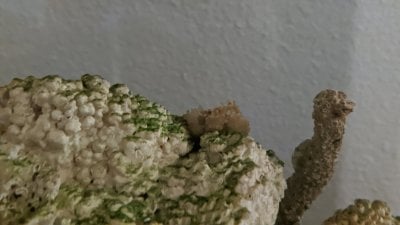that's a good summary above I have rocks with brain corals on them above removed from my vase, the rocks and attached corals are just detailed with a pick of some sort, working around the corals, I never dip or apply treatments to the actual coral you'd handle it like a dentist would be exacting on tooth vs gums rasping, set on the counter worked in the air. then set the cleaned rocks back into the clean sand tank with all new water. we dont need to seed with any old water or handfull of current sand, we dont need seeding the rocks are fine with their bacteria as they are, even after cleaning.
the prep work is primarily making sure you have enough saltwater heated, readied, for the all new gallons in the new setup. Ive seen a few posts now where that part wasn't ready and they delayed hours heating up water, things still awaited ok though.
one other minor prep: it takes a surprisingly long time to rinse used up sand, maybe 2 hours
use tap water the whole time, so you have endless rinse. we do not need the bacteria from the sand, you're trying to rinse it out along with the waste. final rinse is ro
with each passing 30 mins set of cloudy water, dump, rinse, cloudy water dump rinse lol you will begin to fear the loss of bacteria.
I even feel it lol as the author of the post, but we press through. that feeling is all the false training we've received about bacteria being weak and us needing to buy something to dose, so they're not weak
trust in the 37 pages lol rinse until that sandbed is this clean, then you will have a skip cycle reassembly 100% fact.
that sand is the caribsea ocean direct, falls like snowglobe grains.
*15 years of coral, rocks are sitting in the air on dinner plates next to it. I dont even submerge my rocks for 30 mins while rip cleaning, that's why its never a problem advising people here to hold their corals and rocks in a bucket of water.
the prep work is primarily making sure you have enough saltwater heated, readied, for the all new gallons in the new setup. Ive seen a few posts now where that part wasn't ready and they delayed hours heating up water, things still awaited ok though.
one other minor prep: it takes a surprisingly long time to rinse used up sand, maybe 2 hours
use tap water the whole time, so you have endless rinse. we do not need the bacteria from the sand, you're trying to rinse it out along with the waste. final rinse is ro
with each passing 30 mins set of cloudy water, dump, rinse, cloudy water dump rinse lol you will begin to fear the loss of bacteria.
I even feel it lol as the author of the post, but we press through. that feeling is all the false training we've received about bacteria being weak and us needing to buy something to dose, so they're not weak
trust in the 37 pages lol rinse until that sandbed is this clean, then you will have a skip cycle reassembly 100% fact.
that sand is the caribsea ocean direct, falls like snowglobe grains.
*15 years of coral, rocks are sitting in the air on dinner plates next to it. I dont even submerge my rocks for 30 mins while rip cleaning, that's why its never a problem advising people here to hold their corals and rocks in a bucket of water.
Last edited:























